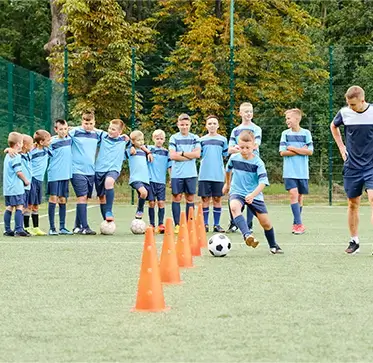CRFC BLOGS
LATEST BLOGS & NEWSLETTERS
Designing Effective Youth Soccer Practices: Embracing Movement, Decision-Making, and Fun
Integrating a comprehensive and engaging approach to youth soccer practice is vital for nurturing young talents. Coaches are often on the lookout for drills that not only improve individual skills but also simulate real-game situations, ensuring high engagement and practical learning. This article aims to guide youth soccer coaches through designing a practice that maximizes soccer ball touches and body movements, emphasizes strategic play, and ensures that every player is actively involved.
Emphasizing 100% Participation with Ball Skills
Initiate the session focusing on individual soccer ball skills to ensure 100% participation. Start with soccer passing and shooting drills like dribbling moves, “kick-catch-kick” sequences, and ball-in-hand trapping, allowing players to develop a profound connection with the ball. The primary goal is to enhance players’ comfort and competence with the ball, forming the foundation for advanced soccer skills and decision-making.
Core Principles
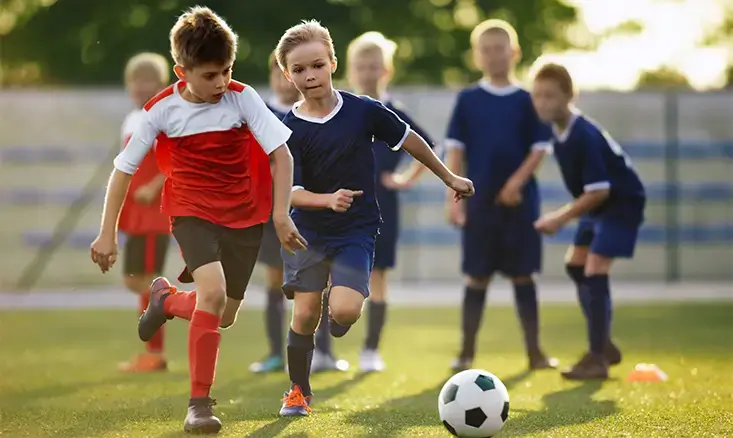
Transitioning to Active Game-like Scenarios
After focusing on soccer ball skills, the session evolves into more dynamic drills including soccer movements and positions that mirror game situations, transitioning skills into context, which is crucial for engagement and learning.
The Drill's Structure:
Place two goals about 40 yards apart with players evenly distributed. This setup transitions into a game-like scenario that focuses on maximizing player engagement and repetition.
The Flow:
1. Division
Players are split into small groups at each goal to ensure active participation.
2. Initiation
The goalkeeper begins the drill by passing the ball to a central player, emphasizing the strategic advantage of utilizing the field’s center.
3. Obstacle Navigation
The player dribbles through a series of flags or cones, simulating a path through defenders, fostering agility and decision-making.
4. Strategic Choices
Upon clearing the obstacles, the player must decide whether to pass wide, penetrate with a through ball, or opt for a long diagonal ball, critical for developing rapid decision-making skills in game-like situations.
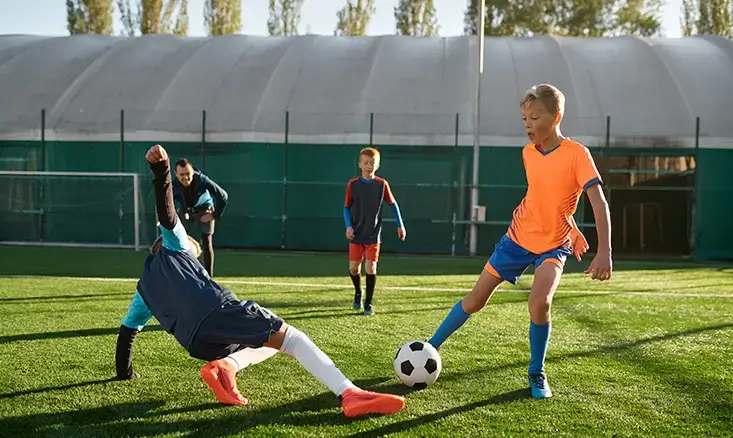
Continuous Play and Decision Making
2 on 1 Challenge
After navigating through obstacles, the soccer player collaborates with a teammate to confront a defender in a 2-on-1 situation, leading to a shot on goal. This not only simulates real-game pressure but also emphasizes teamwork and strategic execution.
Continuation
Crucially, the drill doesn’t stop here. The three involved players (the attacker, the assisting teammate, and the defender) quickly transition to attack the original starting goal. The goalie again distributes the ball to the center (or wide). The three players now attach to new defenders back at the original goal. Players at the earliest ages should be encouraged to overlap and look for wall passes. This continuous flow mimics the back-and-forth nature of an actual game, enhancing endurance, strategic thinking, and adaptability.
Dynamic Repetition
The drill continuously flows from one end to the other, involving different sets of players in various roles (attacker, defender, supporter), ensuring that the practice remains engaging and highly beneficial.
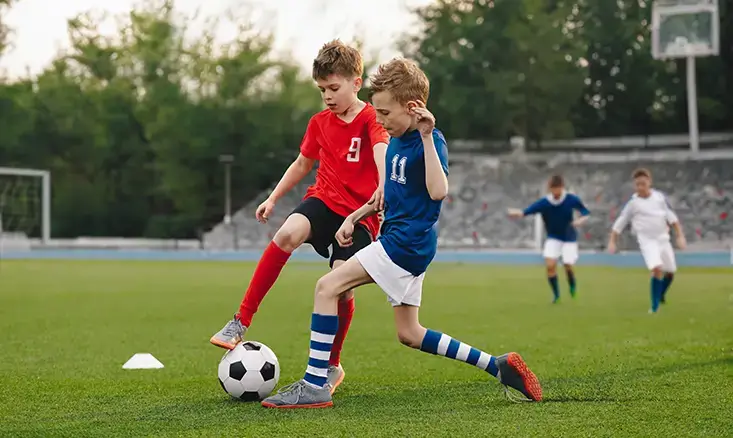
Outcomes and Adaptations
Soccer movement, positioning, and decision-making drills offer a multitude of learning outcomes:
Strategic Utilization of the Field
Players learn the importance of the center field and how to exploit it for tactical advantages.
Enhanced Decision-Making and Teamwork
The continuous flow of the drill, along with the varied scenarios it presents, forces players to make quick decisions, work as a team, and communicate effectively.
Real-Game Stamina and Tactics
The back-and-forth nature of the drill prepares players for the physical and mental demands of a real match, emphasizing endurance, quick thinking, and strategic play.
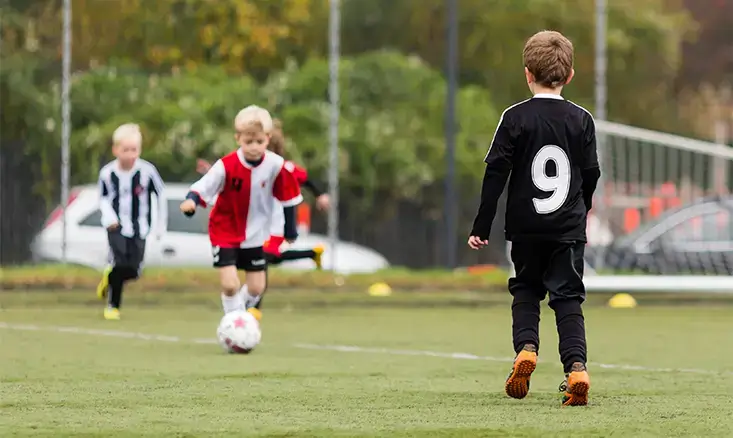
Conclusion: Fostering a Dynamic Learning Environment
By incorporating drills that emphasize constant participation, strategic thinking, and real-game scenarios, coaches can create a dynamic and engaging practice environment. This approach not only improves the individual skills of young players but also fosters a deeper understanding of the game’s tactical aspects. The key is to ensure that the drills remain fun, challenging, and relevant, keeping players active, involved, and eager to learn. Through such practices, coaches can significantly contribute to the development of young soccer talents, preparing them for the complexities and joys of the beautiful game.
FAQs
How do you practice decision-making in soccer?
Practice decision-making in soccer by engaging in drills that mimic real-game scenarios, such as the 2-on-1 Challenge, which requires players to make quick strategic decisions about passing, dribbling, or shooting under pressure.
What is effective decision-making in sport?
Effective decision-making in sport involves quickly assessing the situation, understanding the best options available, and making the optimal choice to achieve the desired outcome, all while under the pressure of competition.
What are the key characteristics of decision-making in soccer and their implications?
Decision-making in soccer is characterized by speed, accuracy, and adaptability. Players must make fast decisions under pressure, which affects team strategy and individual performance, emphasizing the importance of practice and tactical awareness.
What are the 4 principles of decision-making in sport?
The four principles of decision-making in sport are: understanding the situation, evaluating the options, choosing the best action quickly, and learning from each decision to improve future performance.
What skills influence decision-making?
Skills that influence decision-making include cognitive abilities like perception and anticipation, technical skills like ball handling and passing, and psychological factors such as confidence and stress management.

Did you find this useful?


